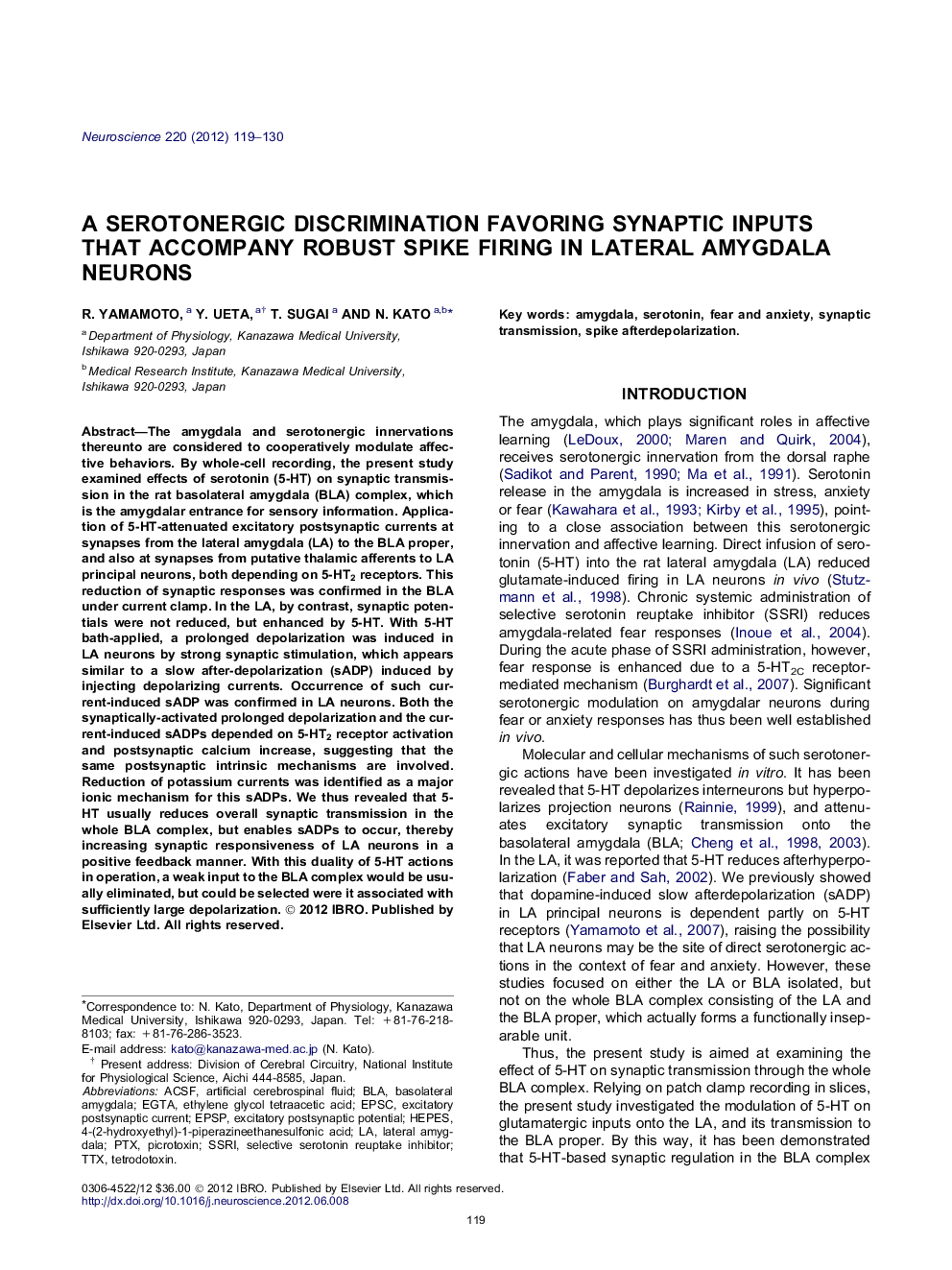| Article ID | Journal | Published Year | Pages | File Type |
|---|---|---|---|---|
| 6275443 | Neuroscience | 2012 | 12 Pages |
The amygdala and serotonergic innervations thereunto are considered to cooperatively modulate affective behaviors. By whole-cell recording, the present study examined effects of serotonin (5-HT) on synaptic transmission in the rat basolateral amygdala (BLA) complex, which is the amygdalar entrance for sensory information. Application of 5-HT-attenuated excitatory postsynaptic currents at synapses from the lateral amygdala (LA) to the BLA proper, and also at synapses from putative thalamic afferents to LA principal neurons, both depending on 5-HT2 receptors. This reduction of synaptic responses was confirmed in the BLA under current clamp. In the LA, by contrast, synaptic potentials were not reduced, but enhanced by 5-HT. With 5-HT bath-applied, a prolonged depolarization was induced in LA neurons by strong synaptic stimulation, which appears similar to a slow after-depolarization (sADP) induced by injecting depolarizing currents. Occurrence of such current-induced sADP was confirmed in LA neurons. Both the synaptically-activated prolonged depolarization and the current-induced sADPs depended on 5-HT2 receptor activation and postsynaptic calcium increase, suggesting that the same postsynaptic intrinsic mechanisms are involved. Reduction of potassium currents was identified as a major ionic mechanism for this sADPs. We thus revealed that 5-HT usually reduces overall synaptic transmission in the whole BLA complex, but enables sADPs to occur, thereby increasing synaptic responsiveness of LA neurons in a positive feedback manner. With this duality of 5-HT actions in operation, a weak input to the BLA complex would be usually eliminated, but could be selected were it associated with sufficiently large depolarization.
⺠5-HT suppresses excitatory synaptic transmission in lateral amygdala (LA). ⺠5-HT enables LA neurons to induce a slow afterdepolarization. ⺠Both of these two mechanisms depend on 5-HT2 receptor activation. ⺠The two mechanisms combined may serve to discriminate significant LA inputs.
